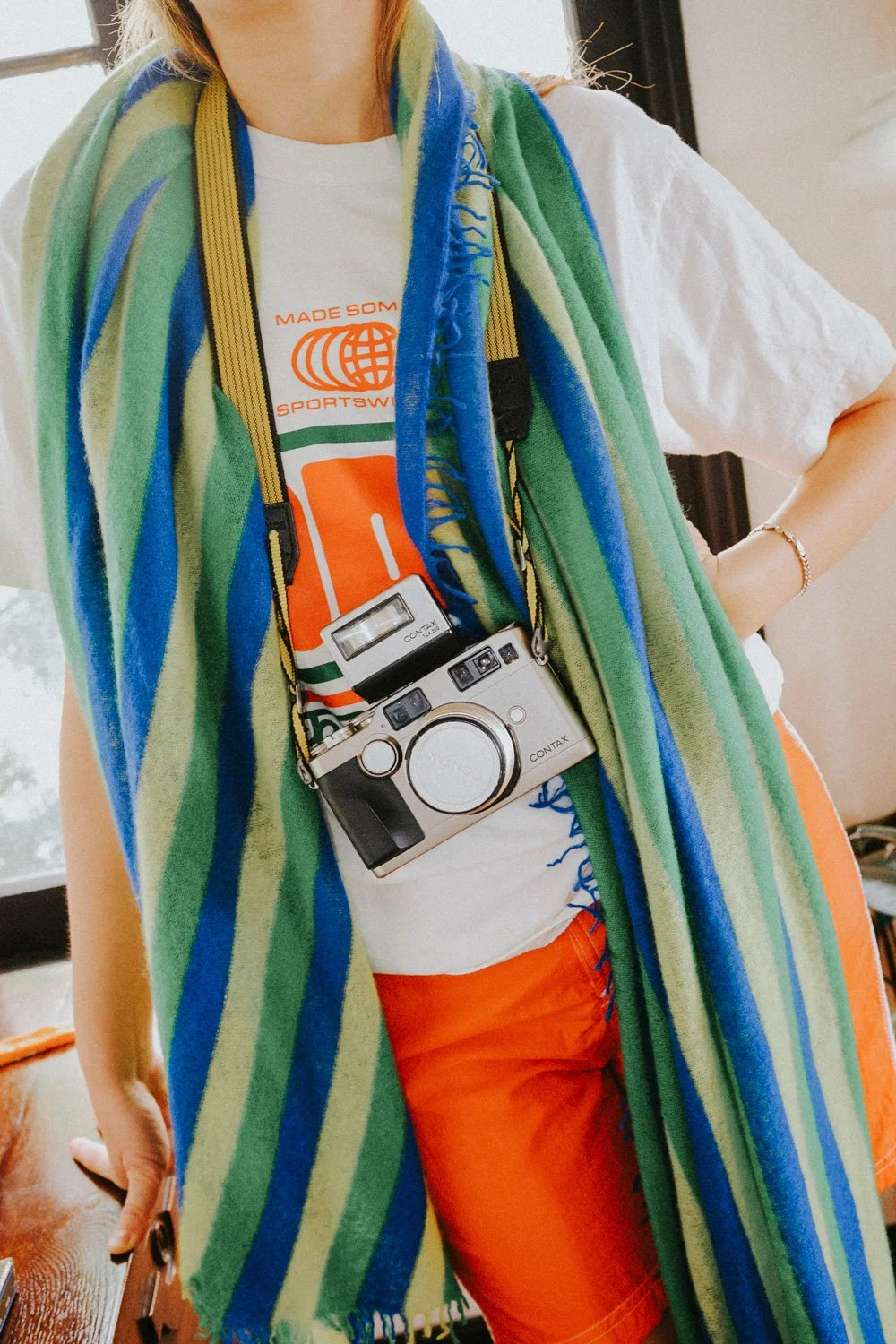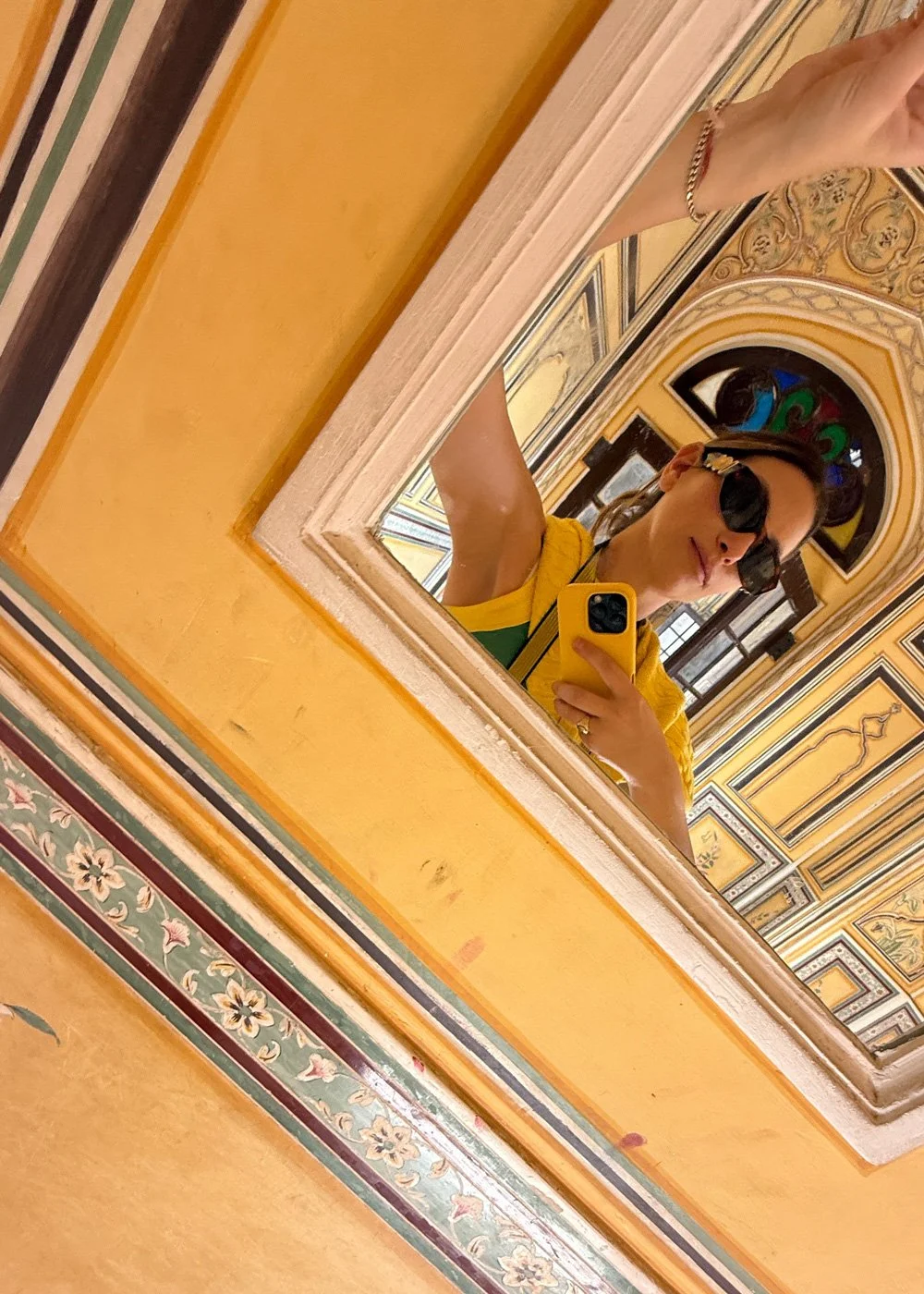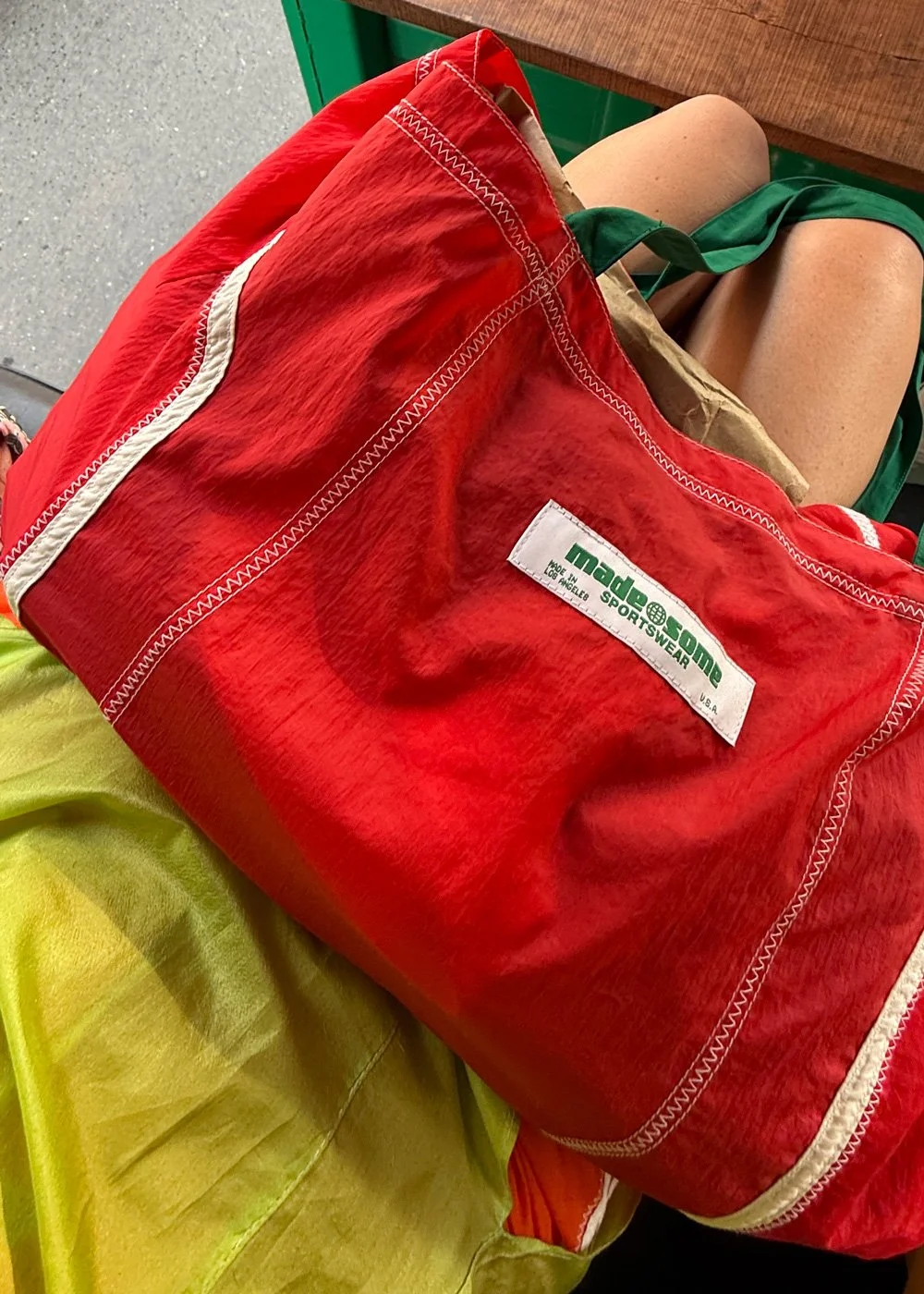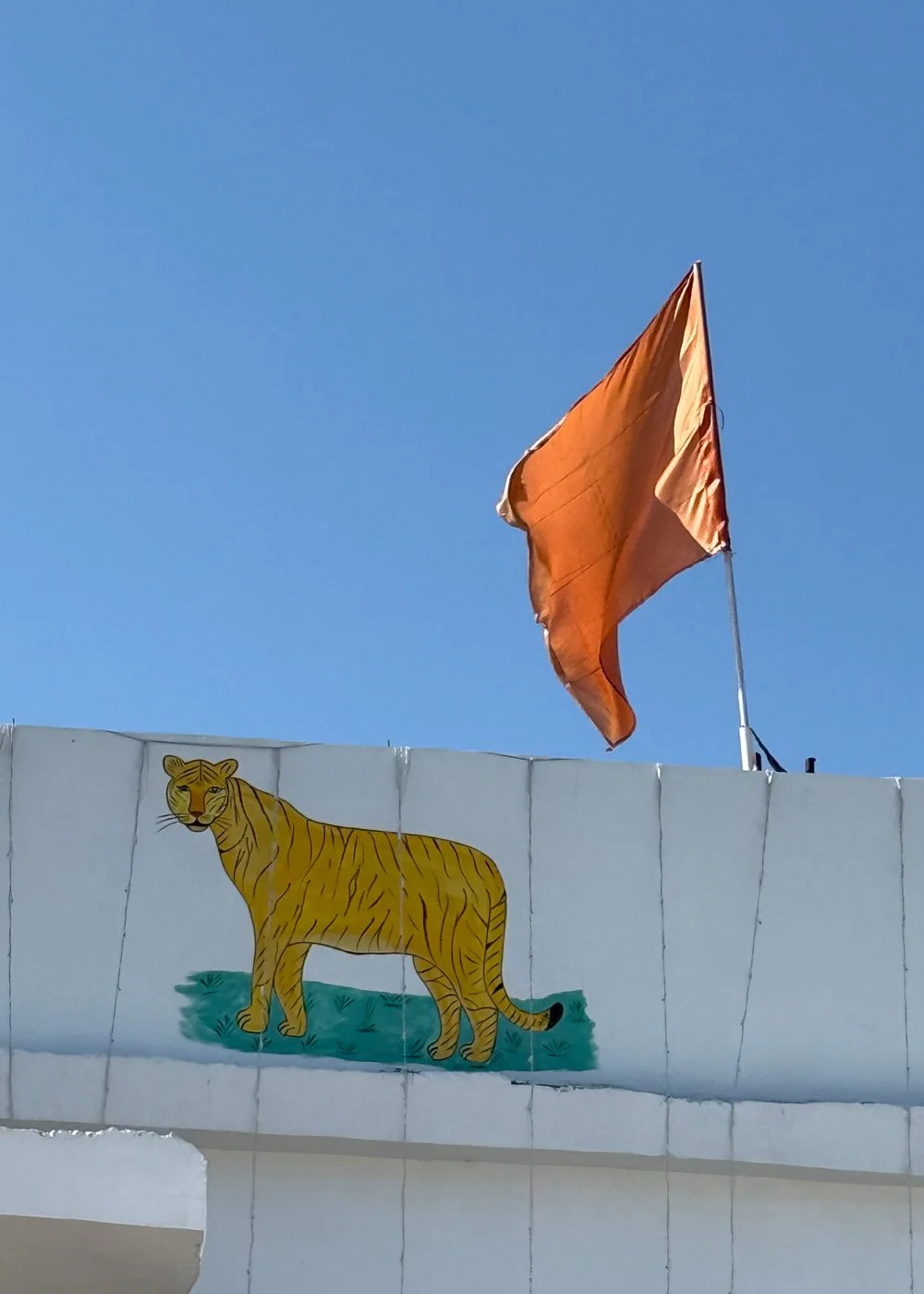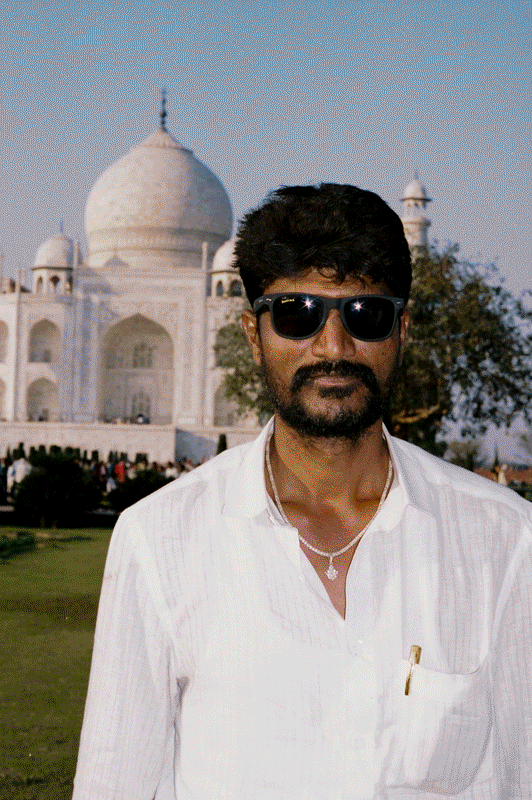How travel, trinkets, and textures can inspire creative direction.
Spring 2025
Madelyn Somers’ Education for Living
In a world of material disenchantment and mass production, objects—like a delicately painted ceramic or a chipped wooden picture frame—have ceased, for many people, to be repositories of sentimentality. We’ve stopped looking at lamps as if they might contain a genie, or carved boxes as if they might hold treasure. Yet somehow, creative director and fashion designer Madelyn Somers remains moved by the magic of things. She’s so moved, in fact, that she’ll travel to the ends of the earth to find such objects—her latest passport stamp emblazoned with an Indian seal.
“I’ll be looking for one thing and get inspired by something else, which shifts my focus,” she says. “My desktop is a mess of inspiration, and my home is filled with fabrics and objects—organized chaos.”
As she tours me around her living room, tastefully strewn with artifacts from her latest trip to India, a recently unearthed painting from her parents’ garage, and a colorful assortment of coffee table books, she explains her philosophy: living spaces should be containers of feeling and memory, lush with remnants of past lives—whether personal or linked by chance. Even an otherwise forgotten knick-knack collecting dust for years can hold a resonant pulse waiting to be tapped.
Growing up with a painter and fashion designer for a mother, a talent manager for a father, and an uncle who was a Disney animator, Madelyn Somers was raised in an orbit that placed a premium on creative expression and cultural osmosis. Initially, she believed her path into the arts would be through acting, but she pivoted when she realized her strengths were better suited to other mediums. Drawn to disciplines ranging from color and composition to photography and graphic/package design, she found it difficult to narrow her initial scope of study.
After consulting her brother, a creative at Netflix, Somers moved to New York in 2012 to study design at Parsons. Slowly, a path began to emerge.
“I wanted to be a creative director, but I wasn’t sure what the gateway would be—whether it would be photography or graphic design. Ultimately, I chose graphic design because I wanted a hard skill. Photography is a skill too, of course, but I felt that graphic design would give me a strong foundation—learning Adobe, typography, composition. I wanted to move from acting, where work is unpredictable, to something more structured. I knew that if I could establish those core design skills, I’d eventually get to a place where I could oversee larger creative projects.”
It wasn’t long before Somers began art directing. While at Parsons, she interned at Madewell and Warby Parker. After graduation, she freelanced as a graphic designer for Refinery29 before landing at Kate Spade. Although he had left the company by the time Somers started, Andy Spade, one of the brand’s co-founders, reached out to her about interviewing for his new pajama brand, Sleepy Jones. After a very New York–style interview in the lobby of the Bowery Hotel, Somers landed the role as his new art director. In that capacity, she started working with photographers and discovered the joys of being on set—something she still loves to immerse herself in.
“A lot of the early work [of devising a campaign] is solo, especially when working remotely, so being able to come together with creative people is really fulfilling,” she says earnestly.
Since that first art director role at Sleepy Jones, Somers has worked across industries—from fashion (Loeffler Randall, Staud) and home goods (Parachute) to more recent ventures into coffee (Chamberlain Coffee) and tech (Google). Her experience as an actress shaped her passion for storytelling, and her success stems from a deep reservoir of cultural and artistic knowledge.
“When I’m working on a project, I don’t look at direct competitors for inspiration. If it’s a coffee brand, I’m not looking at other coffee brands—I’m looking at film, fashion, art, vintage references. That’s where the storytelling comes from,” she explains. “I try to always pull from references that have nothing to do with the product or the thing I’m promoting. It’s like a puzzle—finding the through line and figuring out how to get there is such a fun creative exercise.”
Somers advises aspiring art directors to “have your own point of view and be decisive. It’s really important to get an entire team to see your vision as clearly as you do. Make sure your references aren’t just topical and trendy (though that’s important to a certain extent), but cultivate deep knowledge of art, fashion, and culture that extends beyond the industry you’re working in. Your taste level is your superpower—hone it and make it uniquely yours. Never lose the passion for it or the joy, because that’s tangible in the work.”
If taste level is a superpower, then Somers may very well have a perfectly color-coordinated crime-fighting suit tucked away in her closet. Among her biggest inspirations are Josef Albers and his seminal book Interaction of Color, which shaped her approach to tonal experimentation. She admires photographer Martin Parr for his humorous yet intimate depictions of travelers and landscapes. Her love for painting was inherited from her mother, and both of their favorite artists include De Kooning, Hockney, Frankenthaler, Picasso, and Gauguin. When it comes to interior design, she draws inspiration from Donald Judd’s minimalist use of wood and simple lines, which she layers with color, texture, and pattern in her own work.
With such a broad range of influences, it’s no surprise that Somers has always pursued creative side projects alongside her corporate work. She briefly dabbled in accessory design with Tycoon Neckwear, a business that repurposed men’s ties into women’s bow ties. The brand was featured in Vogue and caught the eye of Jenna Lyons and Mickey Drexler, who flew Somers out to New York in 2011 to discuss selling Tycoon Neckwear at J.Crew.
In 2016, after a stint in the world of accessories, Somers unearthed her mother’s 1970s fashion designs and screen-printed them onto clothing. The idea came to her after she noticed one of her mother’s designs in the background of a promotional video for Rachel Antonoff’s new clothing line. Following a brief Twitter correspondence with Antonoff—who had been trying to track down Somers’ mother for years to express her admiration—Somers took it as a sign to give her mother’s work a larger platform.
These explorations into the world of fashion ultimately culminated in her current not-so-side hustle, Made Some Sportswear.
Made Some Sportswear combines two of Somers’s defining motivators: design and travel. Initially conceived as a souvenir brand, it evolved into a vacation-wear line, with pieces tailored to specific destinations. Among her current offerings are peppy canary-yellow short shorts, vintage-style T-shirts with methodically distinct typography, and beach towels—a collaboration with LA-based brand Mare—striking enough to double as wall art.
Getting the brand off the ground was no small feat. As a one-woman operation, Somers had to figure everything out from scratch. Finding a sample maker took time, but a fortuitous introduction led her to an industry veteran in Norwalk who had worked on the first 501 Levi’s, as well as for Roxy and Quiksilver—brands that embodied the ’70s LA surf culture her father had been part of. From there, she was introduced to others in the industry and developed a deeper understanding of supply chain intricacies.
“My process is inherently slow fashion,” she says. “It’s only me, and I don’t have tons of money to scale overnight. Sometimes I see brands launching collections with resources I don’t have, and it’s frustrating because I know I was working on the same idea. But on the flip side, it means I only put out pieces I’m truly proud of. The attention to detail is there, and I ensure the fit and quality are right. Everything is made in LA because I want to oversee production and maintain quality control.”
Aside from her small production team and someone to steam, fold, and poly-bag items, Somers runs a tight ship—steering comes naturally after years of branding, photographing, and art directing for other companies.
Beyond her artistic influences and multifaceted skill set, travel remains at the core of Somers’s creative process. Whether in her work or personal life, she embraces spontaneity. “The best moments are the unplanned ones,” she says. “I think about when I studied abroad or traveled for seven months before moving to New York. Back then, I had no real responsibilities, no rent to pay, nothing to return to. That freedom is something I try to bring into my brand.”
Most recently, Madelyn traveled across India, visiting Delhi, Jaipur, and Ranthambore. With a camera in hand, Somers snapped pictures and collected a spattering of treasures, pulling inspiration from the gems and textiles of Jaipur, the vibrancy of the blooming marigolds, and the little-known history of the Taj Mahal. Through her lens, Somers sought to isolate and immortalize the spirit of a place, capturing people, their hands, and the objects they had crafted—the subtle scratches and wrinkles of history fluttering through the smallest of details: palms rough from a lifetime of labor, fabrics soft and storied from the transposed warmth of a dedicated artisan.
“I love this Anthony Bourdain quote,” she tells me, pulling it up on her phone in seconds: “Travel is not a reward for working; it’s education for living.” It's the core tenet of a life philosophy stretching itself across her smiling face.
In her dedication to excavating inspirations—be they iconoclastic artists, a hand-dyed scrap of fabric, or a 1960s keychain—it’s evident that just about everything in her orbit, both abroad and at home, is absorbed as “education for living.” Madelyn’s disposition and body of work remind us of the importance of sustained curiosity and a lifetime devoted to learning. Because if everything under the sun is here to teach us, it’s best we make something of it. ❤
Read more stories









